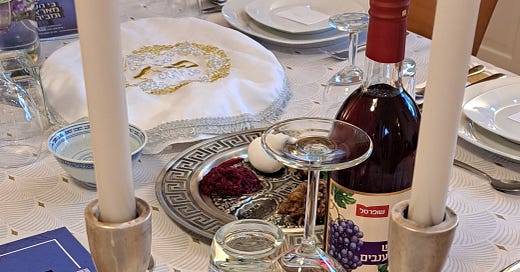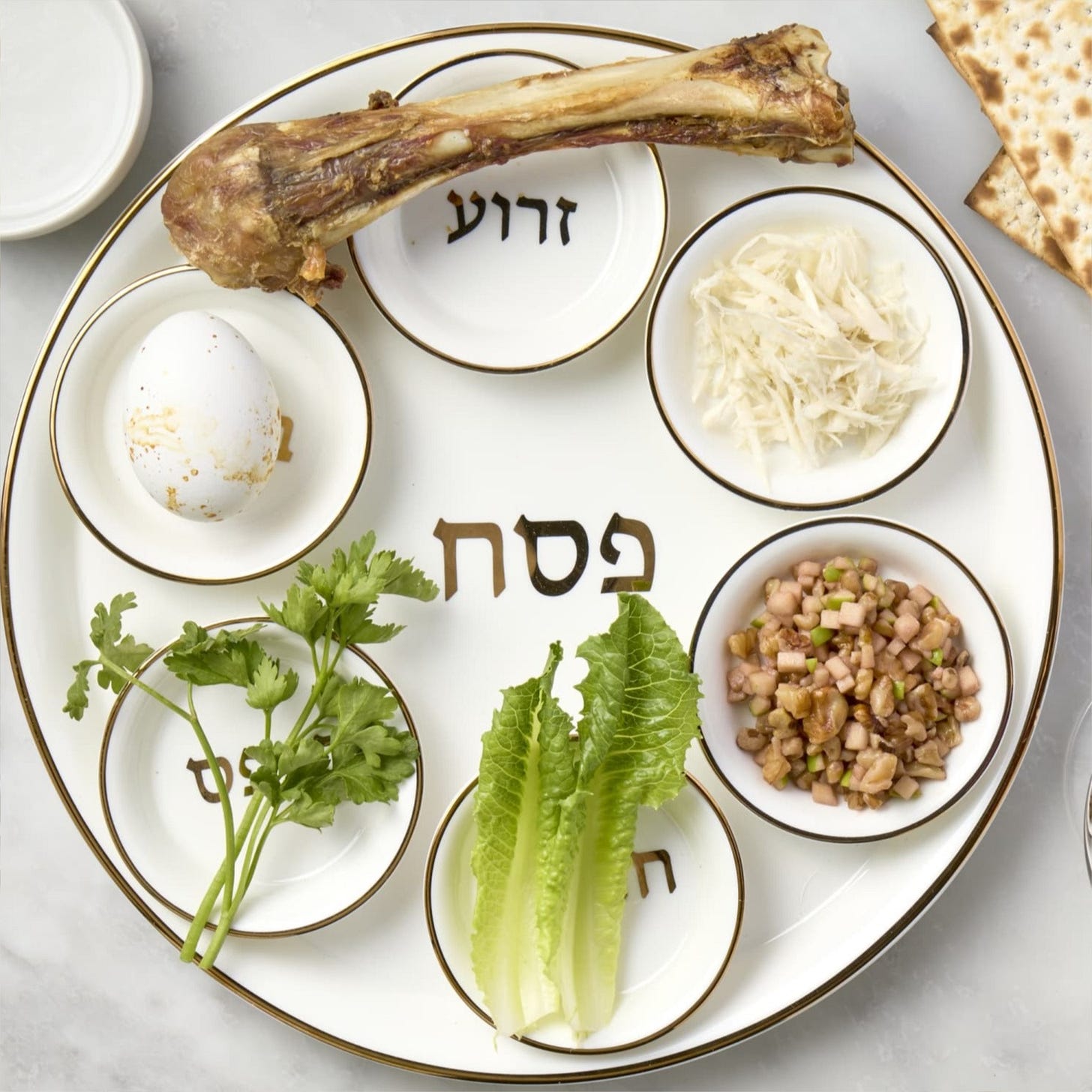Passover, known as Pesach is one of the most symbolic of all the Jewish festivals from a biblical, cultural and culinary perspective.
It commemorates the Israelites freedom from oppression in Egypt, which through the food traditions and cultural themes of this religious celebration, evidence the storytelling of their liberation and salvation.
Pesach commences each year with Seder night, where communities gather together around the Seder table and retell the biblical story of the Exodus. Reciting the narrative, singing songs and uniting around a laden table, Seder meaning ‘order’ serves as a clear structure for the evenings preparations and formality, which through the eating of ritualistic and symbolic foods and drinking of the directed four cups of wine, marks the journey from captivity to deliverance.
Beginning with the edict, “let all who are hungry come and eat,” the Seder is an open invitation for anyone in need to join families in the ritual feast, in the spirit of hospitality, inclusivity, and the unwavering joy of feeding.
The Seder table sets the stage for the festival to begin with the customary Seder plate at its heart. On it sits the symbolic foods that connects us to our past through the recurring themes of freedom, resilience and hope, all of which still carry a heaviness in our hearts, as we yearn for an end to the present conflict and the release of the all the remaining hostages.
Matzah is unleavened bread which we eat during the eight days of the festival and a symbol of both the inflicted oppression and the redemption to freedom. It is known as the ‘bread of affliction’, and acts as a reminder of the suffering the Israelites incurred in slavery, and the haste in which they left Egypt and deprived of time for their dough to rise. It was therefore baked flat and hard, like a cracker, which allowed for basic sustenance and the humility to begin their new found liberty.
Three whole cakes of matzah are placed in a white, decorative cloth, often compartmentalised for each piece, which like the Sabbath challah, shows respect for these ritualistic traditions.
During the storytelling, the matzot are broken into small pieces and passed round at specific points, to be eaten with other symbolic foods on the plate. The middle cake, called the afikomen, from the Greek word meaning "that which comes after" is traditionally broken in half at the beginning of the Seder and hidden for the children to hunt for, after the festive meal, and considered a playful meaning to the discovery of redemption.
The excitement of looking for the afikomen conjures fond memories of Seder night for most of us, igniting feelings of joy and family unity, remembering loved ones who are no longer with us, and the delight of a ‘prize’ for finding the piece of matzah. I seem to remember in our house, it was usually chocolate…
The Seder plate holds the symbolic foods most closely associated with the story of the Exodus and representing the principal themes of its narrative. Flavours and recipes of each component centre around the traditions of the individual communities and their culinary heritage, embracing diversity in the festive fayre.
Maror or bitter herbs, typically characterised by pieces of harsh, pungent greens, reminds us all too intensely of the suffering and hardship of the Israelites in slavery. By eating bitter herbs, in amongst small pieces of matzah, we are said to be tasting their pain and savouring their freedom. Ashkenazim traditionally use the strong, peppery horseradish root, which was the available, affordable edible in the colder climates of Eastern Europe and renowned for it bitterness.
Charoset is a sweet, thick paste made from grated apple and finely chopped nuts, mixed together with red wine, is symbolic in its colour and texture to the mortar used by the labouring Israelites, and eaten as a contrasting reminder that even in hardship, there is a underlying hope of sweeter times ahead. Sephardic tradition sweetens their dip with a variety of chopped dried fruits including dates, figs and raisins, which when mixed with red wine and warming spices of cinnamon, nutmeg and cloves is reminiscent of the flavours of their heritage.
Karpas, usually parsley or celery leaves signifies growth and renewal and a symbol of springtime, when nature reappears following the harsh winter months and the time of the year when Pesach is celebrated. Before the vegetable is eaten, it is dipped in a bowl of salted water which signifies the tears of the Israelites during their years of slavery. The contrasting tastes of this dish is said to symbolise the journey from darkness into light and the bitter suffering that emerges into a glimmer of hope, reinforcing the central themes of the festival. Mizrachim traditionally dip pieces of the humble potato into a bowl of vinegar, as opposed to salt water, adding even more sharpness to substantiate the narrative.
Zeroa is the roasted lamb’s shank bone that sits on the Seder plate, representative of the ancient sacrifices offered up at Passover in the Temple of Jerusalem. It also serves as the reminder of the divine protection given to the Israelites during the plagues that befell the Egyptians before setting them free, as the blood of the sacrificial lamb was smeared over their doorposts, so that God would ‘pass over’ and spare their their firstborn from death.
Beitzah is a whole roasted hard boiled egg, the traditional food of Jewish mourners, that signifies the cycle of life, with no clear beginning or end. It has become the symbol of remembrance and the resilience of the Jewish people.
As the preparations are well underway for Pesach which begins at sundown on Saturday night, the cultural and spiritual themes of this biblical narrative deeply resonate with us all and the current climate of conflict. As tradition dictates and we open our homes to feed family, friends and those in need, we can only hope for the freedom of all those absent from our table and unable to feast with us this year, and unite in the struggle for peace.
Happy holidays…







